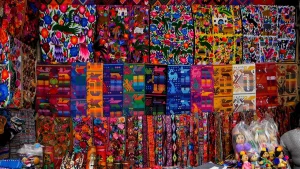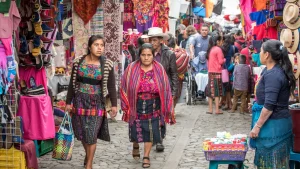Guatemala is a land of syncretism, here the Catholic rituals meet Mayan rituals. But also, the streets hide centuries of legends and stories told from generation to generations and Maya myths blur the line between reality and magic.
These stories will make you look twice when you go on your next vacation to Guatemala.
One of the most famous legends in Guatemala, a ghostly woman who wanders the streets at night crying for her lost children. It is said that she drowned her children in a fit of rage and is now doomed to roam the earth searching for them.
Be careful to cross El Sombreron, another popular legend. He is known for his large hat and is said to be a trickster who can cast spells on those who cross him. El Sombrerón is a mysterious figure who is said to seduce young women by playing the marimba and braiding their hair.
The legend of El Cadejo tells of a supernatural dog that appears at night to protect lost travelers or drunk people from harm. There are two versions of the Cadejo – one white, the one that protects people; and one black, a demon that leads people to their doom. So, the white Cadejo represents good and the black Cadejo represents evil.
An interesting character is La Tatuana, a legendary and mysterious woman often associated with magic, witchcraft, and rebellion. According to the story, she was a beautiful woman with magical powers who was imprisoned during the colonial period, accused of witchcraft. Before being executed, she escaped from her prison cell by drawing a ship on the wall with charcoal and sailing away into the night — a magical act that left her captors baffled. She is a witch or spirit of freedom and rebellion, a figure that appears when needed — particularly to help women or others suffering from injustice.
Los Aluxes are knee-high, childlike beings that protect sacred land. People believe they can be found near Mayan ruins like Tikal, uaxactun or Yaxhá. People must leave them gifts, like cacao or honey, or they’ll steal your socks or lead you in circles. Farmers in Petén still build tiny stone houses called “casitas de aluxes’ to keep them happy.
These aren’t just campfire stories—they’re living history. The Cadejo warns against drunkenness. La Llorona reflects colonial trauma. Aluxes show the Maya’s deep tie to nature.







